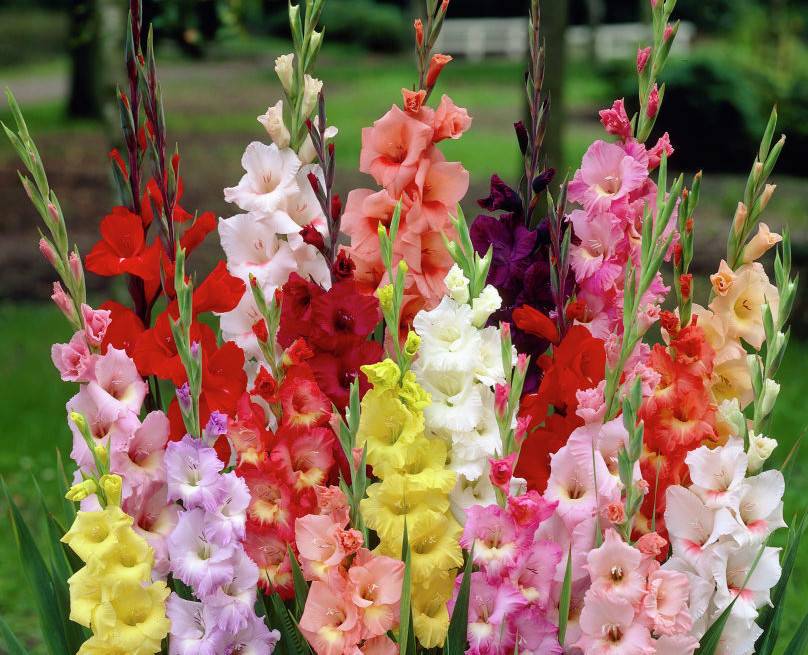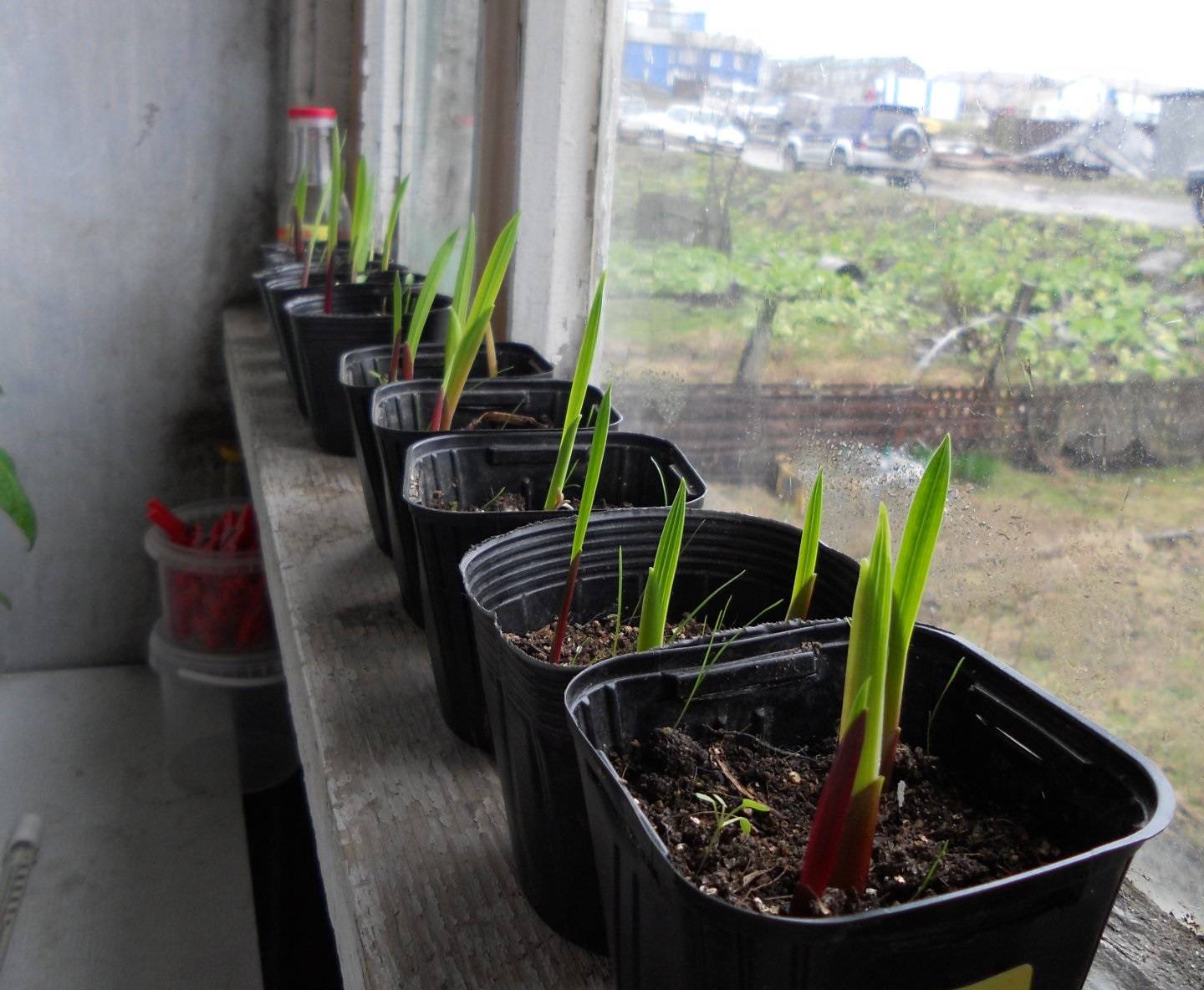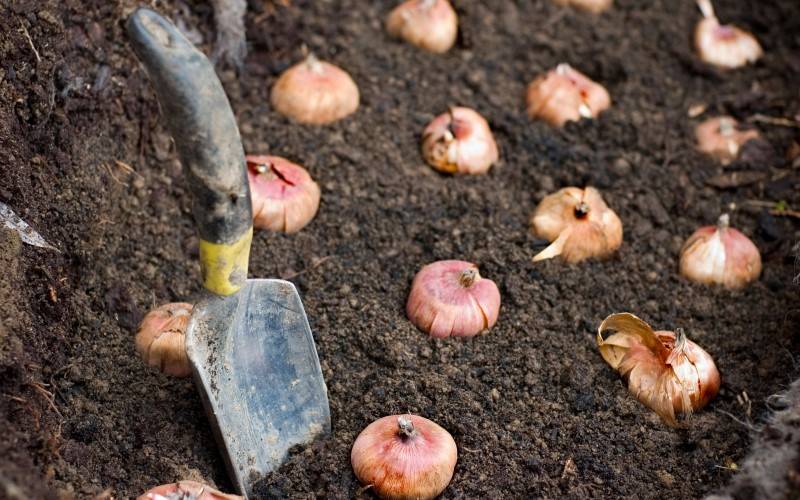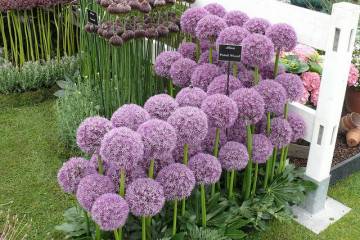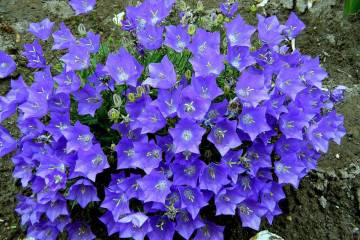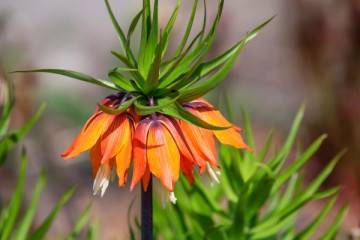Gladioli planting and growing
Content:
Gladioli are one of the few flowers that began to be cultivated even before our era. They were used to decorate the gardens of high-ranking gentlemen of Ancient Rome and ancient Greece. Planting, caring for gladioli in the open ground in your own garden area should be carried out according to certain rules. Then the flower will delight you with a beautiful and bright flowering.
General information about the plant Gladiolus
Many beliefs and legends have long been associated with gladiolus. One of them says that the flowers grew at the place where the Thracians were defeated by the blades of the Romans. No wonder the ancient Romans called it "sword flower", because of the external similarity with edged weapons. Gladiolus was a symbol of victory and power.
Characteristics
The flower belongs to the Iris family, is a perennial corm plant. Another name for gladiolus is a skewer. In its natural environment, the flower grows in the tropics and subtropics of Europe, Central Asia, Africa and the western territories of Siberia. It is especially common in the coastal regions of the Mediterranean Sea.
Gladioli grow no more than 150 centimeters in height, have long leaves up to 80 centimeters in the shape of a sword. Each leaf blade closes at the base around the stem of the bush.
Sessile flowers are funnel-shaped and form spiral inflorescences, which are about 50 centimeters long. The flowers are not the same size, some of them are 4 or 5 times the length of the smallest bud.
Popular varieties
There are more than 8 thousand varieties of gladioli, the most popular of which are:
- Dmitry Solunsky. A tall bush up to 2 meters in length, has large white-pink buds.
- Moscow White stone. 1.5 meters high, white flowers with a creamy core.
- Blue snowflakes. Medium height with small white flowers.
- Neon lightning. 1.5 meters high, with purple buds.
- Oscar. Tall bushes with bright scarlet flowers and a slight corrugation of buds.
Breeding species of Gladioli
Gladioli are propagated by seeds, seedlings and tubers. In home floriculture, the seed method is practically not used.
Seeds
Seeds are planted in boxes with soil fertilized with humus at the end of winter. Before planting, they are soaked in saline for good resistance to cold and disease. The seeds are buried to a depth of no more than 2 centimeters.
Tubercuffs
Choose large bulbs that are at least 2 years old. With a sharp knife, it is divided into parts so that each has at least one healthy kidney. Slices must be processed with crushed activated carbon. The planting of the divisions is carried out in the usual way.
Seedlings
Separate pots are needed to grow seedlings so that the roots cannot grow together. It is important to provide the seedlings with plenty of light and moderate watering. After the appearance of three leaves, the seedlings are planted in an open garden area.
Basic rules for growing
To learn how to plant gladioli and grow them correctly, you must definitely familiarize yourself with the basic care rules.
Seat selection
The choice of a place for planting is selected based on the climatic preferences of the flower. Gladioli are thermophilic and light-loving plants. The growing area should be sunny and open, but protected from chilling cold drafts. It is best to plant flowers near buildings. However, the side for landing must be chosen south or west.
It is not recommended to plant flowers in ravines and low-lying areas; it is better to grow on hillocks. Groundwater should run at a depth of at least 2 meters.
When can I plant
When to plant gladioli so that they rise on time and begin their active growth? Planting of gladioli bulbs is carried out in the spring in the second half of April. It is necessary to have time to carry out planting work before the end of May, otherwise there will be a loss of soil moisture.
What is the depth to make the beds
After digging the beds and applying organic fertilizers, it is necessary to prepare the holes for planting. The depth and width of the dug hole should be three times the size of the bulb. The distance between each seedling is left at least 15 centimeters. The planting depth of each corm should be 10 centimeters.
Planting gladiolus bulbs outdoors
One of the main recommendations of experienced florists is to plant large bulbs separately from small ones. It is necessary to deepen them only by no more than 3 centimeters, otherwise they may not rise or will grow slowly and often hurt. But if they are planted with lighter soil, you can plant them at a deeper depth. After planting, mandatory watering is required.
Preparing the bulbs for planting
Before planting gladiolus bulbs in the ground, it is necessary to start preparing the bulbs for growing in the open field in 2-3 weeks. The upper flakes are first removed from their surface. Although they are dense, the procedure must be carried out very carefully so as not to damage the bulb itself. Damaged planting material is one of the main causes of diseases, cessation of active growth and even death of a flower.
Then it is necessary to strengthen the immunity of the bulb. Each onion is placed in a solution of potassium permanganate and left for 2 hours.
Preparing the soil for planting
To prepare the soil for planting, you need to know how to plant gladioli correctly and what kind of soil they prefer. Flowers grow well in different soils. The main rule is constant transplanting and changing the composition of the soil.
For the first two years, the plant can be grown on sandy loam soil, and the other for a couple of years - on black soil. Gladioli prefer slightly acidic soils, otherwise the leaf plates begin to constantly dry out along the edge and become sick with fusarium. The introduction of chalk or dolomite flour will help to lower the acidity of the soil.
Gladioli care
After solving the problem of how to plant gladioli correctly, another concern arises - care. It should be carried out from the period when the plant begins to sprout and until its very digging or death.
Watering
Caring for gladioli involves mandatory and regular watering. It should be held at least once a week.It is necessary to pay special attention to the quality of the irrigation water. Which in no case should be cold and hard.
It is best to water gladioli in the morning or evening. For an area of 1 square meter of a plot under flowers, at least 10 liters of water should be consumed. After watering, the soil is loosened to a depth of 5 centimeters and hilling is carried out around the base of the bushes.
Weeding
Weeding is given special attention until the first two or three leaves appear in the seedlings. To prevent weeds from taking all the nutrients necessary for growth from the soil, weeds must be removed regularly. After increasing the plant, weeding is carried out less often, and after flowering, one weeding in summer is enough until the end of the season.
Spraying
Since gladioli are tropical plants, they constantly require high humidity. In dry summer periods, you have to increase the humidity yourself. To do this, it is enough to spray from a spray bottle with cool and clean water. Such a procedure will help not only to breathe life into flowers, but also to clean large leaf plates from dirt and dust.
Garter
Caring for gladioli requires a garter to the pegs, since after the formation of new buds on the arrows, the stems cannot withstand a large mass and begin to bend and break. The pegs should not be less than 5 centimeters of the bush itself if driven into the ground. They should be strictly perpendicular and firmly stuck into the ground. It is necessary to tie up the plant in the middle of the stem.
Top dressing
The basic rules for growing gladioli is timely feeding with mineral and organic fertilizers. The number and composition of feeding elements is determined by the number of leaf plates on the bush. The first feeding is carried out when the first two leaves appear. At this time, Kemira Kombi's solution is used, it will not harm the young bush.
The second feeding is carried out before flowering in June or July. Top dressing should include phosphorus, nitrogen, zinc, magnesium, potassium. It is better to suspend feeding during flowering. After flowering, fertilizers are applied in the fall, around September. Potassium-phosphorus fertilizers and organic matter in the form of manure or humus are used.
Cutting flowers
Cutting flowers is carried out with a very sharp knife so as not to injure the structure of the stem. The procedure must be carried out either early in the morning or in the evening after sunset. It is imperative that when cutting, it is necessary to leave the peduncle deep among the leaves, and there should be at least 4 leaves on each bush.
Possible growing problems
Often gladioli get sick, most often due to improper care. In this case, the main tips for preventing various problems during growing are timely treatment and preventive measures throughout the active growth of flowers.
Pests
The most common pests in gladioli are wireworm and gladiolus thrips. Wireworms occur in the absence of weeding, so timely weeding can prevent this problem. But if it has already arisen, then you should immediately get rid of the parasites. It is necessary to treat the bushes with Bazudin and Provotox preparations.
Gladiolus thrips especially affects flower inflorescences. They begin to lose their colors, the plant stops flowering. Pests are destroyed both by folk methods and by special chemicals.
Diseases
Of the diseases, gladioli are often susceptible to fungi, fusarium and scab. Problems arise either due to abundant watering, or lack of it. Fungus and scab are a consequence of the accumulation and stagnation of moisture in the soil. Dark spots begin to appear near the base of the stems and spread upward.When neglected, it is necessary to dig up the flower and burn it, otherwise the disease will be transmitted to nearby bushes.
Fusarium is effectively treated by spraying and treating the soil with a solution of ferrous sulfate and copper oxychloride.
Signs of improper care
Improper care is the main cause of diseases and pests of gladioli. How to care for flowers correctly and harm with excessive care? With excessive feeding with nitrogen fertilizers, gladioli cease to bloom. During flowering, you should generally abandon fertilizing or fertilize with potash fertilizers. If the plant grows in flowerpots and pots, it is best to transplant them outdoors in summer. Otherwise, due to the lack of transplants, it will begin to fade and fade.
Beautifully flowering gladioli, planting and caring for which requires certain rules, grow well both in pots and in open areas in summer cottages and gardens. Flowers can be grown not only for decorating park ensembles, but also for cutting and decorating buds.
